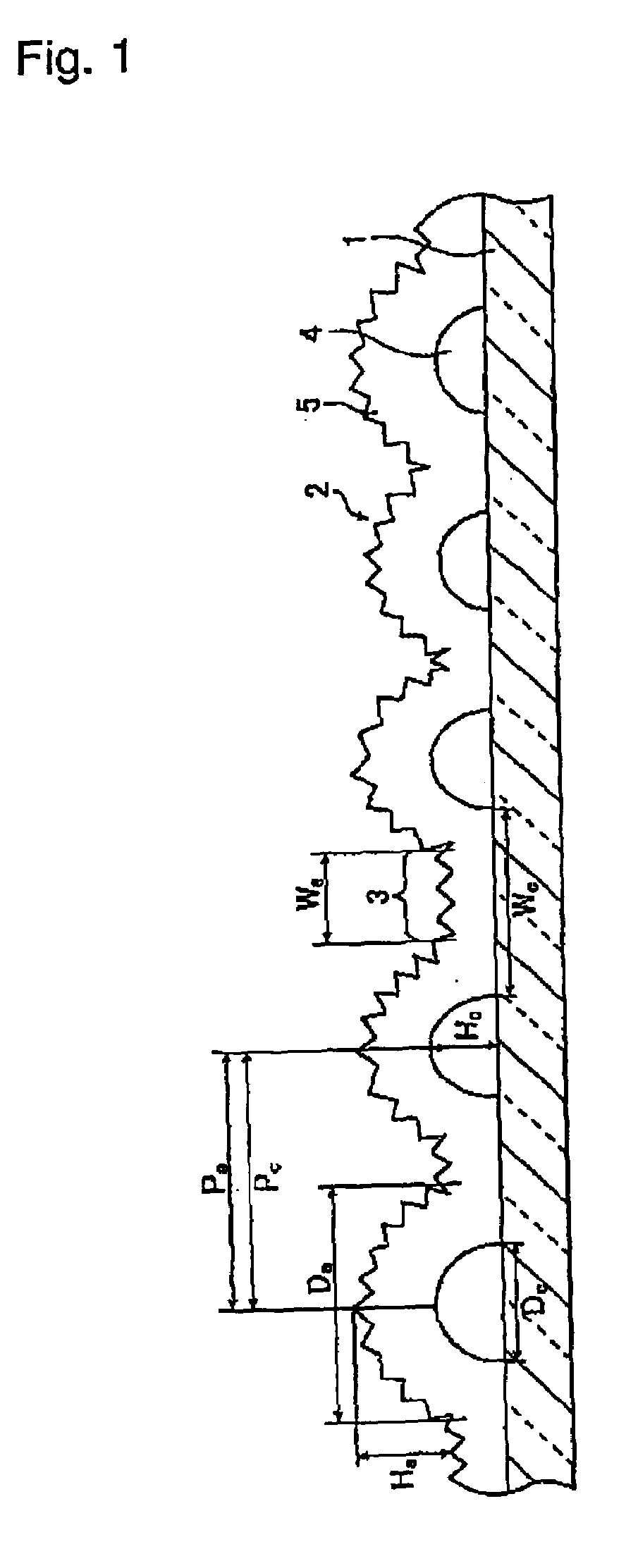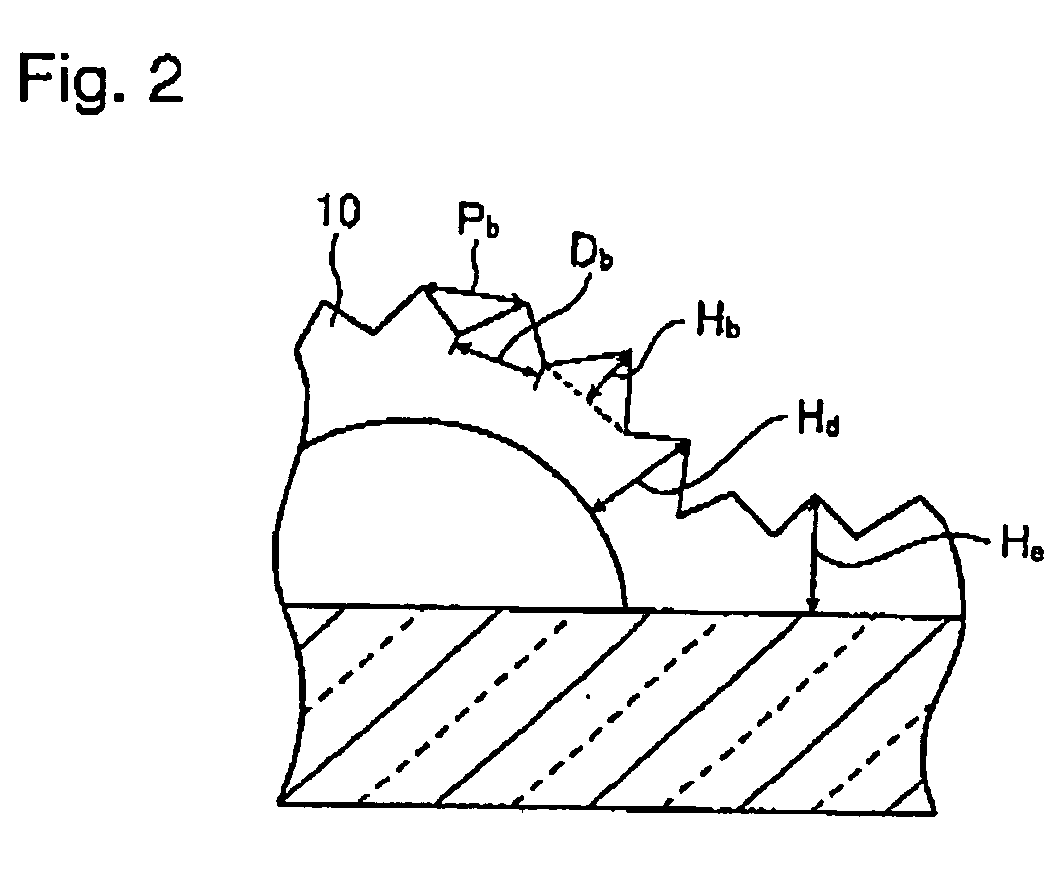Substrate with transparent conductive oxide film, process for its production and photoelectric conversion element
a technology of conductive oxide film and substrate, which is applied in the direction of oxide conductors, non-metal conductors, instruments, etc., can solve the problems of difficult to increase the efficiency of photoelectric conversion, the inability to avoid free electron absorption, and the inability to increase the photoelectric conversion efficiency of solar cells
- Summary
- Abstract
- Description
- Claims
- Application Information
AI Technical Summary
Benefits of technology
Problems solved by technology
Method used
Image
Examples
examples
[0165]A substrate with a transparent conductive oxide film of the present invention having a double texture structure was prepared under the conditions as identified in the following Examples.
(1) Production Example 1
Formation of First Oxide
a) Example
[0166]A substrate with a transparent conductive oxide film was prepared by an atmospheric pressure CVD method on a soda lime glass substrate. A soda lime glass substrate of 300 mm×300 mm×1.1 mm in thickness was heated to 500° C. in a belt conveyor furnace (speed of the belt: 1 m / min), and firstly, 4 L / min of nitrogen gas containing 5 mol % of silane gas and 20 L / min of oxygen gas were blown thereto simultaneously to form a silica film. Then, the glass substrate with this silica film was heated to 540° C., and tin tetrachloride, water and hydrogen chloride gas were simultaneously blown thereto to form SnO2 as the first oxide. Tin tetrachloride was preliminarily heated to 45° C. and transferred onto the substrate by blowing nitrogen gas at...
PUM
| Property | Measurement | Unit |
|---|---|---|
| conductive electron density | aaaaa | aaaaa |
| distance | aaaaa | aaaaa |
| distance | aaaaa | aaaaa |
Abstract
Description
Claims
Application Information
 Login to View More
Login to View More - R&D
- Intellectual Property
- Life Sciences
- Materials
- Tech Scout
- Unparalleled Data Quality
- Higher Quality Content
- 60% Fewer Hallucinations
Browse by: Latest US Patents, China's latest patents, Technical Efficacy Thesaurus, Application Domain, Technology Topic, Popular Technical Reports.
© 2025 PatSnap. All rights reserved.Legal|Privacy policy|Modern Slavery Act Transparency Statement|Sitemap|About US| Contact US: help@patsnap.com



